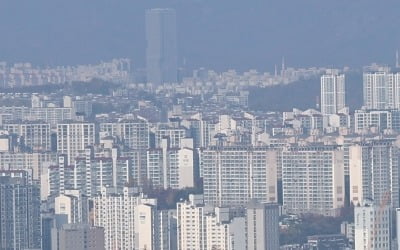국제 유가, 배럴당 50달러서 수급 균형 찾을 듯
-
기사 스크랩
-
공유
-
댓글
-
클린뷰
-
프린트
글로벌 에너지 정보업체 플래츠의 유가 전망

브렌트유와 서부텍사스원유(WTI)는 펀더멘털에 가시적인 변화가 없음에도 불구하고 각각 올 들어 최저치 대비 40%가량 가격이 올랐다. 러시아의 알렉산드르 노바크 에너지 장관이 주도하는 산유국 협조체제는 이란의 동참 없이도 작동할 전망이다. 이달 들어서는 에콰도르 오만 아랍에미리트(UAE) 등이 잇따라 합류했다. 다만 노르웨이가 합류를 검토하지 않는다고 했고 미국은 아예 논의에서 빠진 상태다.
노바크 장관은 1월 산유량 기준 동결 합의를 통해 시장에서 하루 130만배럴의 초과공급분을 제거할 수 있다고 말했다. 하지만 어떻게 해서 이런 숫자가 나왔는지는 설명하지 않았다. 사우디아라비아가 여름철 전력수요 증가를 앞두고 하루 75만배럴의 원유를 추가 생산하는 것을 안 한다는 뜻이라고 추측하는 사람도 있다. 하지만 이는 사우디 입장에서는 수용하기 어려운 ‘감산’이다. 심지어 정치적 라이벌인 이란은 생산량을 늘리는 와중이다.
국제에너지기구(IEA)는 미국 셰일오일 생산과 재고량 증가 등의 이유를 들어 단기간 내 유가가 회복될 것이라는 전망이 ‘헛된 기대’일지 모른다고 지적했다. 원유거래회사 비톨의 경영진인 크리스토퍼 베이크는 수급 균형이 이뤄지지 않으면 상업용 원유와 정유 재고가 향후 6개월간 3억6000만배럴 더 쌓일 것이라고 경고했다.
미국 셰일오일 회사들이 얼마나 살아남아 생산을 재개할 수 있을 것인지는 시험대에 올라 있다. 베이브 헤이거 데븐에너지 최고경영자(CEO)는 셰일오일 업체 중 상당수가 배럴당 55~60달러 선에서 생산할 수 있다고 밝혔다. 또 스콧 셰필드 파이어니어내추럴리소시즈 CEO는 배럴당 60~70달러 선에서 셰일오일 생산이 증가할 것이라고 말했다.
이는 배럴당 50~55달러에서 전통적·비전통적 원유 생산자들과 세계 수요가 균형을 이루게 될 가능성을 시사한다. 이 가격대에서 셰일오일 업계는 지난 수년간 진행된 생산 과열을 정리하고 효율성을 갖춘 회사만 살아남게 되며, 대형 산유국은 재정 규율을 유지하면서도 경제 다각화를 지속할 것이기 때문이다.
반다나 하리 수석애널리스트
한국경제신문은 글로벌에너지 정보 제공업체 플래츠(Platts)의 에너지 관련 칼럼을 매달 1회 독점 게재합니다.
[원문]
OIL INSIGHT WITH PLATTS: The "freeze" that failed to warm oil market sentiment
Singapore -- In more "normal" times the oil market might have analyzed the implications of a highly conditional "output freeze" agreement between a handful of producers amid a persistent supply glut, before reacting. But these are not normal times. The deal -- that actually wasn't -- ended up whiplashing the already panicky market and leaving it hopelessly hopeful.
Brent crude had clambered above $35 as February drew to a close, with NYMEX light sweet futures around $33/barrel, both 25% above the year's lows touched on January 20, though nothing had visibly changed on fundamentals.
What had changed was a lot of jawboning by a few oil ministers upending earlier convictions that an OPEC/non-OPEC collaboration to rein in supply was out of the question. By the end of the month, the can had been kicked down the road, to a mid-March meeting between major producers flagged by Russian energy minister Alexander Novak.
The fact that crude prices have more than halved since OPEC's landmark decision in November 2014 to defend market share at any cost, leaving producer pockets across the globe in tatters and equilibrium seem increasingly like a mirage, lent credence to the deal between Saudi Arabia, Russia, Venezuela and Qatar at a meeting in Doha February 16.
Only, it was so conditional -- other major OPEC and non-OPEC producers have to join in for the agreement to take effect -- and so watered down -- capping output at January levels rather than actually cutting it -- that it was hard to take it seriously.
Bijan Zanganeh, oil minister of Iran, which is aspiring to boost exports by 1 million b/d over the coming months, dismissed it as a "joke" in remarks published by the country's ISNA news agency February 23 -- barely a week after hosting his counterparts from Iraq, Qatar and Venezuela and expressing support for the freeze proposal.
Russia's Novak, who has been driving the collaboration initiative, suggested a freeze could take effect even without Iran's participation. As the first week of March got underway, more OPEC and non-OPEC producers had voiced support for the freeze proposal, including Kuwait, Iraq, Ecuador, Oman and the UAE, though Norway said it wasn’t considering joining, and the US remained out of the discussions.
A freeze at January levels could remove 1.3 million b/d of oversupply from the markets, Novak said, though he didn't explain the math behind the number. Some deduced it might mean an absence of the typical seasonal ramp-up in Saudi crude production of up to 750,000 b/d to meet increased demand from power production at home during summer months. But that would leave the Kingdom bearing the brunt of the cutback, something hard to fathom, especially without political arch-rival Iran chipping in.
OPEC's 13 members pumped 32.43 million b/d in January, about 820,000 b/d above the 31.61 million b/d average 2016 demand for its crude the organization projected in its February report.
Saudi oil minister Ali Naimi, addressing an industry conference in Houston the week of February 22, expressed confidence that major producers, including Iran, would join the freeze pact, but said seeking production cuts would be "wasting our time" as no one would deliver.
Some analysts concluded Saudi Arabia might simply be testing its fellow producers' willingness to cooperate and comply with a relatively benign freeze commitment (other than for Iran) before proposing a production cut at OPEC's June meeting.
Indeed, as the month progressed, the freeze proposal appeared all entangled with suggestions of a production cutback.
Non-OPEC Oman, for its part, offered to cut output by 10%, or 100,000 b/d, if a deal was reached between major OPEC and non-OPEC producers.
Paris-based International Energy Agency, policy advisor to the world's developed countries, cautioned those forecasting a price recovery in the short term of a "possible false dawn," citing resilient US shale output, rising stocks, and little apparent chance of coordinated OPEC/non-OPEC production cuts.
Christopher Bake, member of Vitol's executive committee, told the annual International Petroleum week in London that the world could put another 360 million barrels in commercial crude and refined product stocks over the next six months unless supply and demand rebalance, having added 450 million barrels through 2015.
US shale's resilience, though, is on test. Bankruptcies and ratings downgrades are on the rise, with the spring round of bank loan redeterminations is expected to see a 20-30% reduction in the borrowing bases of the small and mid-sized producers, who are also fast losing hedging protection due to a depressed forward curve.
US shale doesn't need $90/barrel anymore, Dave Hager, CEO of Devon Energy told IHS CERAWeek in Houston, but $55-60 is where the "vast majority" of plays would work. For shale production to actually grow, the industry needs $60-70/barrel price, Scott Sheffield, CEO of Dallas-based Pioneer Natural Resources, told the same event.
That suggests there could be a "sweet spot," around $50-55/barrel, at which conventional and unconventional oil supply balances with global demand. It keeps the most efficient shale oil in business while curtailing the production boom of the past few years; gives some breathing room to the big producing nations while maintaining the pressure on them for greater fiscal discipline and economic diversification; and satiates the growing appetite of the major import-dependent emerging economies while providing them the much-needed relief of reduced forex outflows.
--Vandana Hari
Asia Editorial Director Platts and Research Scholar, McGraw-Hill Financial Global Institute


!["수험표 대신 여권 챙겨라"…항공사 할인혜택 쏟아진다 [차은지의 에어톡]](https://img.hankyung.com/photo/202411/99.21089727.3.jpg)
